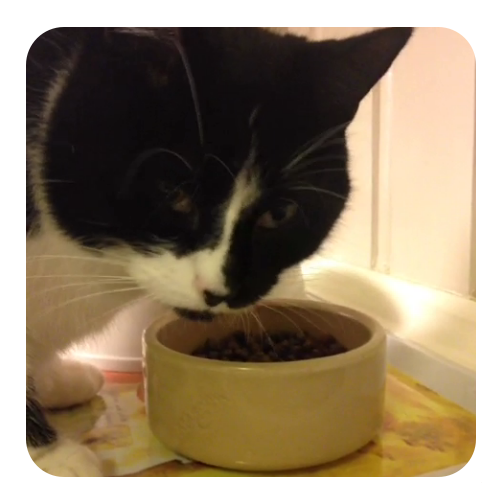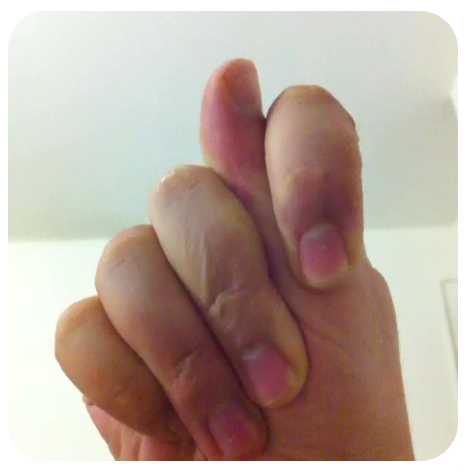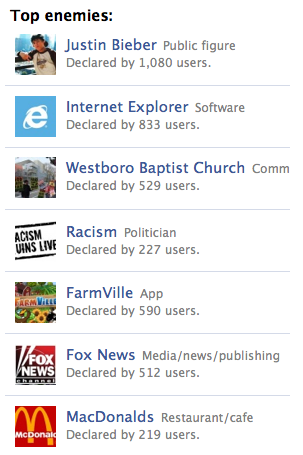

A few quick thoughts on Vine. Mostly positive.
Yes, I know I’m supposed to be posting a 6 second vine video instead of writing this. Well, I’ve made 20 or so none of them have been posted. I haven’t quite got my head around an approach, and cats and breakfast cereal are well covered.
The short form is not an issue. I remember thinking 12 seconds was a very long time after making a series of videos for a 12seconds.tv film festival when it was active. In fact, I ended up making micro 3 act structures, each 4 seconds long. I also curated and participated in early mobile video exhibitions where the videos were 15 seconds each. I just looped things to fill out the time. So 6 seconds is plenty.
One of the things I like the most about Vine being integrated directly within twitter is that is begins to compensate for the text centric nature of the platform.
I prefer to express myself publicly with image/sound first, then text. This has not been an easy thing to do with social media to date, and is partly why I’ve deleted well over half of my tweets almost immediately after publishing them (and partly why we made Undetweetable which collected deleted tweets).
This text-nervousness is compounded by being uncomfortable with the casualness of social media posts in the first place. With image/sound posts some of us may be able to express ourselves with less anxiety. (I often find the best response to something is an untranslatable gesture, sound or color). Then again, it may just create another kind of anxiety.
On Twitter there’s generally an expectation that things should make linear sense, because they are text and links and quotes. Of course they don’t have to (hence my 2010 ThroatOcean account). This is already the case with Vine in that certain visual conventions have become cliche’s which are contextual frames for making videos quickly digestible.

The obvious thing to do is time lapse, or some kind of time shifting, which usually emphasizes speed (or visual efficiency as Nathan Jurgensen recently called it) and there are a number of these at the top of the Vine selected favorites. But there are other ways to use Vine that are between the extremes of meticulous stop motion and a careless shaky six second video of whatever happens to be in front of you.
One of the first things I thought would be interesting is to try and give the illusion of stretching time, making it seem slow, much longer than 6 seconds. Or video only accounts, or days where only videos are posted in sequence. Or just sound. It will also be interesting to see how it’s used in breaking news events - and if anyone manages to create fake vines during such events.
Speaking of sound, it’s something having audio integrated into twitter, but it’s not much. It will have to mostly be voices and low resolution mid frequency sounds. As I’ve complained many times before, default audio recording and playback on mobile devices is far behind video. Sound in online video is often merely accidental.
Technically, what would be helpful is to be able to save the videos as a draft while in process, to be able to make the time shifts very long while making other videos in the meantime. Then again, having to finish the video before making another one can be considered part of the constraints, reminiscent of long sequences in Robert Rodriguez’s first film El Mariachi. Also, as the software stands now, it’s pretty hard to do.
Vine could provide an opportunity for a more visual twitter that’s different from Instagram or Tumblr and the tired, over fetishized history of animated gifs. I’ll resist it, bit most posts will be casual (which is often for the benefit of platform owners, not necessarily the users). On the positive side, Vine may open another door for visual signature and the performance of identity. Or it could be just cats and breakfast.

[video]

PRESS Updates:
NPR Marketplace
The Chronicle of Higher Education
MSNBC
Los Angeles Times
Mashable
Slashdot
Daily Mail UK
San Francisco Chronicle
Vice
TNT
BuzzFeed
and hundreds more just do a search on google news.
For the past six months my research group has been looking into an app that explores social dissonance on Facebook. Today we are announcing the public release of EnemyGraph. The project was developed principally by graduate student Bradley Griffith with invaluable help from undergraduate Harrison Massey.
EnemyGraph is an application that allows you to list your “enemies”. Any Facebook friend or user of the app can be an enemy. More importantly, you can also make any page or group on Facebook an “enemy”. This covers almost everything including people, places and things. During our testing testing triangles and q-tips were trending, along with politicians, music groups, and math.
Most social networks attempt to connect people based on affinities: you like a certain band or film or sports team, I like them, therefore we should be friends. But people are also connected and motivated by things they dislike. Alliances are created, conversations are generated, friendships are stressed, stretched, and/or enhanced.
Facebook runs queries to find affinities. EnemyGraph runs what we call dissonance queries. So if you have said you like, say, Portlandia on your profile page, and in our app one of your friends has declared them an “enemy” we will post this “dissonance report” in the app. In other words we point out a difference you have with a friend and offer it up for conversation, as opposed to a similarity. Relationships always include differences, and often these differences are a critical part of the fabric of a friendship. In the country club atmosphere of Facebook and it’s platform such differences are ignored. It’s not part of their “social philosophy”.
EnemyGraph is a critique the social philosophy of Facebook. On it’s developer splash page Facebook invites us to “Hack the Graph” - and so we did. We give them a couple of weeks at best before they shut us down for broadening the conversation and for “utilizing community, building conversation, and curating identity” their three elements of social design. EnemyGraph is a kind of social media blasphemy.
The ironic thing is - and this is a byproduct of the project rather than the intention - we are generating a whole new set of personal data that could potentially be mined. I found it a compelling tool for self expression, at least as powerful as the likes list on your Facebook profile page. Often, it tells you a great deal about a person in a way that an affirmative list can not. The first thing my colleague Dave Parry though of to list, for example, was venison, which says a lot by itself.
I’m sure there are new algorithms that can be developed around what you can sell some one when they don’t like X or Y, and conversely what they will like, what kind of person they are, etc. Or, similar to an idea Clive Thompson mentioned to me, find out what I might like or dislike based on a set of dislikes I share with others. We’ve thought about it and think there’s actually a positive social value in all this. Alliances between people around social and political issues are one thing. There are also interesting ways to connect to people that you never would have known by affinities alone. The group that has made venison an enemy might have never encountered one another. And of course there are also likely ways to structure business around it (which is why Andrew Famiglietti thinks maybe Facebook will leave EnemyGraph up, even while they hold their nose). But our interest for this project is a simple, expressive, often fun critique of the lopsided Facebook approach to online mediated social interaction.
A few people have asked us about the potential for misuse. Beyond the obvious fact that every tool can be misused ours is all opt in. Also, based on our test group, it’s also mostly in jest. (I’ve been to top enemy among my friends all through testing). If you are not friends with someone, or not a user of the app, or generally not famous, you cannot be listed as an “enemy”. We will also monitor the app closely for abuse.
Because of the fact that you can make pretty much any object, place, or thing that has a FB page an “enemy” EnemyGraph is in some ways an unfortunate name. So it’s not just a list of people. In fact you can have an entire list with no people on it at all. In a way we are misusing the word “enemy” just as much as Facebook and others have misused “friend”.
One early user described EnemyGraph as a way to “interact with your friends over common enemies … creating alliances based on shared animosities”.
How the project was made:
When I saw the first friends list at the beginning of the social media era the first thing I thought was “where’s the enemies list?” No one ever made one, so we did. We actually started out working on something called UnFriends. It was in the aftermath of undetweetable, which generated plenty of attention, but was shut down by Twitter in 5 days. After coming across some language from Facebook saying an app cannot encourage unfriending we decided to shelve what was nearing a finished application. We knew it would last only a day or so. So we moved on to what at first we called EnemyList, which was just that simple. Once we figured out you could add any FB page it became EnemyGraph - playing off “social graph”. The project was developed almost entirely by Bradley Griffith over the course of a few months, with invaluable research help from Harrison Massey. Bradley is an Emerging Media + Communication (EMAC) graduate student and Harrison is an undergraduate.
As to how it fits in with the research agenda of my lab, we look at EnemyGraph as a test to learn from for the new project we are about to start on for this semester. Because these kinds of tools have not been available previously we are interested to see how they are used. We plan to take what we learn and apply it to an outside of Facebook site that explores similar territory, but in a broader fashion.
_